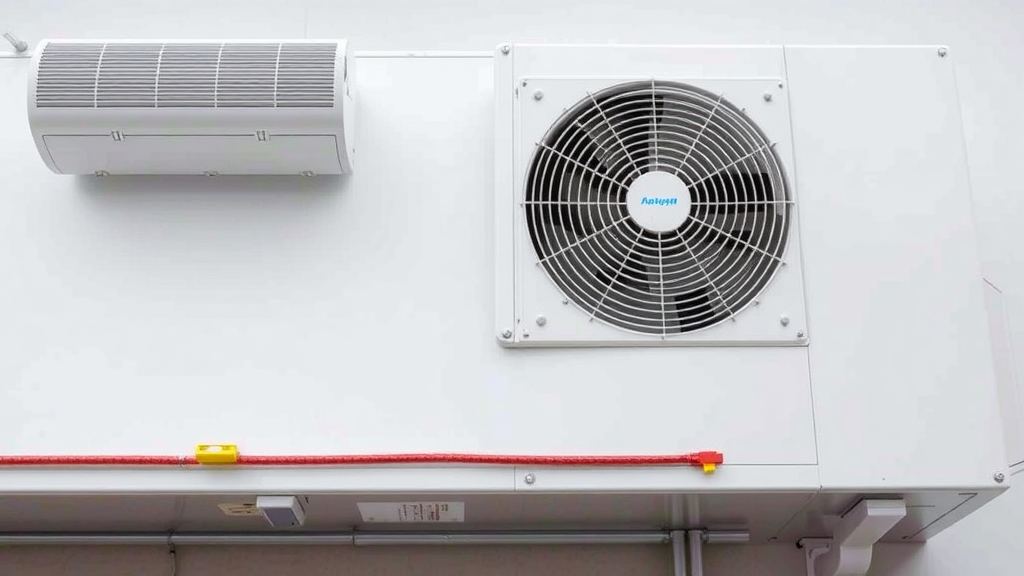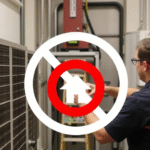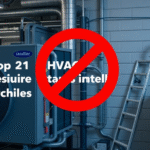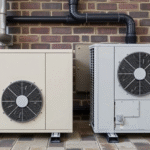Understanding Building Automation in HVAC Systems
Building automation in HVAC systems plays a crucial role in enhancing energy efficiency and comfort in residential and commercial buildings. This technology involves using centralized control systems to manage heating, ventilation, and air conditioning systems. By integrating these systems into a cohesive platform, you can streamline operations, maximize energy savings, and improve indoor air quality.
The Basics of Building Automation
At its core, building automation uses technology to control various building systems. These can include:
- Heating systems
- Cooling units
- Air filtration
- Lighting
- Security systems
The primary goal is to create a comfortable and efficient indoor environment while minimizing energy consumption. With smart sensors and advanced algorithms, a building automation system can adapt to changes in occupancy and weather conditions, ensuring optimal performance.
Key Components of HVAC Building Automation
Understanding the components involved in building automation is essential. The main elements include:
- Control Systems: These serve as the “brain” of the automation setup, managing and processing data from sensors and user inputs.
- Sensors: These devices monitor temperature, humidity, and occupancy levels, providing real-time data to adjust HVAC settings accordingly.
- User Interfaces: Often in the form of dashboards or mobile apps, these interfaces allow facility managers to interact with the system and make adjustments as needed.
- Actuators: These components execute control commands from the control systems, adjusting valves and dampers to regulate airflow.
Benefits of Building Automation in HVAC Systems
Investing in building automation for HVAC systems yields numerous benefits that may include:
- Energy Efficiency: Automated systems can reduce energy consumption by adjusting settings based on real-time conditions, often leading to reduced utility bills.
- Enhanced Comfort: By maintaining consistent temperatures and fresh air circulation, building occupants experience improved comfort levels.
- Improved Indoor Air Quality: Automated ventilation and filtration systems ensure clean air, catering to the health of occupants.
- Reduced Operational Costs: Predictive maintenance alerts help facilities avoid costly repairs and improve system longevity.
Implementing Building Automation in HVAC
A successful building automation strategy begins with a thorough assessment of the existing systems. Consider the following steps:
- Evaluate current HVAC performance data to identify inefficiencies.
- Engage with professional consultants who specialize in building automation.
- Select hardware and software components that meet your specific needs.
- Implement a phased approach to minimize disruptions during installation.
- Train staff and occupants to use new systems effectively.
Future Trends in Building Automation
The future of building automation in HVAC systems looks promising. Some trends to watch include:
- Internet of Things (IoT): Increased connectivity will make systems more responsive and adaptable.
- Artificial Intelligence (AI): AI technologies will enhance predictive analytics for energy management.
- Remote Monitoring: Users will be able to manage HVAC systems from anywhere, improving convenience.
As you consider building automation for your HVAC systems, take the time to research and select solutions that fit your specific needs. Resources like ASHRAE and Energy.gov provide great insights on current technologies and best practices.
Building automation in HVAC is a transformative approach that not only enhances system performance but also contributes to overall energy savings and occupant comfort. By understanding its components and benefits, you can make informed decisions that will serve both your facility and its occupants well.
The Benefits of Integrating Building Automation into HVAC
Integrating building automation into HVAC systems transforms the way we manage heating, ventilation, and air conditioning in commercial and residential spaces. This modern approach offers numerous advantages that enhance comfort, efficiency, and sustainability. Here are some key benefits of incorporating building automation into your HVAC system:
Improved Energy Efficiency
One of the most significant benefits of building automation is improved energy efficiency. By utilizing sensors and automated controls, you can optimize the operation of your HVAC system according to real-time conditions. This approach reduces wasted energy, leading to lower utility bills. For instance:
- Temperature sensors automatically adjust heating and cooling based on occupancy.
- The system can work in tandem with weather forecasts to preemptively adjust settings.
Enhanced Comfort Levels
With building automation, climate control is finely tuned to meet the needs of occupants. Smart systems monitor and respond to variations in temperature and humidity. This ensures that indoor environments remain comfortable throughout the day. Some features that contribute to increased comfort include:
- Individual zone control allows for customized settings in different areas.
- Air quality sensors detect levels of CO2 and other pollutants, triggering ventilation as needed.
Operational Cost Savings
By integrating building automation into HVAC systems, property owners can achieve significant operational cost savings. Automated controls and strategic scheduling mean systems run only when needed. Key aspects leading to cost savings are:
| Operational Benefit | Potential Savings |
|---|---|
| Reduced energy consumption | Up to 30% or more |
| Lower maintenance costs | 10-20% through predictive maintenance |
| Extended equipment lifespan | 5-10 years by reducing wear and tear |
Easy Monitoring and Control
An automated HVAC system provides effortless monitoring and control, allowing you to access system data anytime and anywhere. These systems often come with user-friendly interfaces or mobile applications, enabling users to:
- Adjust temperature settings remotely.
- View energy consumption trends over time.
- Receive alerts about system performance or potential malfunctions.
Environmentally Friendly Solutions
Integrating building automation into HVAC promotes sustainability by reducing carbon footprints. By enhancing energy efficiency:
- The reliance on fossil fuels is diminished, promoting greener energy sources.
- Automated systems allow for better management of natural resources.
Moreover, many building automation systems can link to renewable energy sources, leveraging solar or wind energy to minimize environmental impact.
Scalability and Adaptability
As facilities grow or change, building automation systems can easily scale to meet new demands. Whether adding additional HVAC units or integrating new technologies, these systems adapt to your needs. Furthermore, their modular design allows:
- Easy integration of new equipment and sensors.
- Seamless compatibility with various building management systems.
Enhanced Security
Building automation systems often include security features such as access control and surveillance integration. With HVAC being a significant part of a building’s overall security strategy, automated monitoring can:
- Detect unusual activity in restricted zones.
- Adjust ventilation to mitigate smoke in the event of a fire.
To explore more about the benefits of integrating building automation into HVAC, you can visit ASHRAE and Buildings.com. These resources provide extensive insights and developments in HVAC and building automation technology.
Integrating building automation into HVAC systems is a forward-thinking approach that maximizes efficiency, enhances comfort, and promotes sustainability. By investing in this technology, you position your building for improved performance and lowered operational costs, paving the way for a more comfortable and environmentally-friendly future.
Key Components of Building Automation Technology
Building automation technology is the backbone of modern facilities management, helping to seamlessly integrate various building systems for improved efficiency and comfort. Understanding its key components can provide insight into how these systems operate and how they can benefit you.
1. Sensors
Sensors play a crucial role in building automation. They collect data from the environment, such as temperature, humidity, occupancy, and light levels. This information is vital for ensuring optimal conditions within a building. Key types of sensors include:
- Temperature Sensors: Monitor indoor temperatures to adjust HVAC systems accordingly.
- Occupancy Sensors: Detect people in a space, allowing systems to respond by adjusting lighting and heating.
- Light Sensors: Measure natural light levels and control artificial lighting to save energy.
2. Controllers
Controllers serve as the brain of the building automation system. They interpret the data collected from sensors and execute commands to various systems throughout the building. A well-designed controller will:
- Analyze input data to make real-time decisions.
- Automate responses, such as adjusting temperatures or lighting levels based on occupancy.
- Enable remote access for facility managers.
3. Actuators
Actuators are devices responsible for moving or controlling a mechanism or system. They act on the signals received from controllers, making physical adjustments in the building systems. Common types include:
- Valves: Manage the flow of water or air in HVAC systems.
- Fans: Adjust airflow based on temperature and occupancy data.
- Dampers: Control air intake and exhaust, enhancing indoor air quality.
4. User Interfaces
User interfaces allow building managers and users to interact with the automation system. They display information, provide controls, and enable easy adjustments. Typical user interface formats include:
- Touch Screen Panels: Offer a simple, visual method for control.
- Web-Based Interfaces: Allow remote access to systems from any internet-connected device.
- Mobile Apps: Provide on-the-go access to building management functions.
5. Networking Infrastructure
The networking infrastructure forms the communication framework that links all components of building automation. A robust network is critical for the effective operation of these systems. Key aspects include:
- Wired Networks: Utilize Ethernet and fiber optics for reliable communication.
- Wireless Networks: Enable flexibility and ease of installation with protocols like Zigbee and Wi-Fi.
- Protocols: Communication standards such as BACnet and Modbus ensure compatibility across different devices.
6. Building Management Systems (BMS)
A Building Management System (BMS) is a centralized platform that integrates all building automation functions into a cohesive unit. With a BMS, you can:
- Monitor and control HVAC, lighting, security, and other systems from a single dashboard.
- Analyze data to optimize energy efficiency and reduce operational costs.
- Implement proactive maintenance strategies by predicting system failures.
7. Data Analytics
With the growth of smart technology comes the need for data analytics. Building automation systems generate vast amounts of data, and harnessing this data is essential for:
- Identifying inefficiencies in building operations.
- Enhancing the occupant experience by fine-tuning comfort settings.
- Driving decisions based on historical patterns and predictive modeling.
8. Integration and Scalability
One key advantage of building automation is its ability to integrate various systems for seamless management. It’s crucial for future growth that these systems are scalable to incorporate new technologies as they become available. When considering a building automation system, look for:
- Compatibility with existing systems and devices.
- Ability to expand and integrate additional functionalities as needed.
- Support for emerging technologies, such as IoT and cloud computing.
For more information about building automation technology and its components, check out Buildings.com or visit HVAC.com. Understanding these key elements will help you appreciate the value of building automation in enhancing comfort and efficiency within modern structures.
How Building Automation Enhances Energy Efficiency
In today’s world, energy efficiency is more important than ever. One of the key players in enhancing energy efficiency is building automation, especially in HVAC systems. Building automation refers to the use of technology to control the building’s environment, allowing for more optimal operation and management.
By integrating building automation into HVAC systems, facilities can monitor and manage various components more effectively. These systems aim to streamline operations, reduce energy consumption, and lower costs while providing occupants with a comfortable environment.
Here’s how building automation enhances energy efficiency:
- Real-Time Monitoring: Building automation systems provide real-time data on energy usage and environmental conditions. This data allows facility managers to make informed decisions, leading to improved energy management.
- Automated Control: With automated controls, HVAC systems can adjust settings based on occupancy levels or outside weather conditions. This reduces wasted energy when spaces are unoccupied.
- Scheduled Operations: Scheduling allows building managers to program HVAC systems to operate only when needed. For example, systems can run at lower capacities during off-peak hours or be turned off when the building is closed.
- Optimal Equipment Performance: Building automation helps ensure that HVAC equipment runs at peak efficiency. Regular monitoring and performance analytics help identify maintenance needs, preventing energy waste due to malfunctioning units.
- Zone Control: Modern building automation enables diverse temperature zones within a building. This means specific areas can be heated or cooled based on the requirements, optimizing energy use across different spaces.
Integrating building automation systems can lead to significant energy savings. According to a report by the American Society of Heating, Refrigerating and Air-Conditioning Engineers (ASHRAE), intelligent building automation can reduce energy consumption by as much as 30-50%. This level of efficiency translates to not only lower utility bills but also a smaller carbon footprint.
Another notable advantage is the enhancement of indoor air quality (IAQ). Automated systems can ensure proper ventilation and filter changes, leading to a healthier environment. Maintaining good IAQ is crucial for occupant health, productivity, and overall comfort.
Furthermore, leveraging predictive analytics can boost energy efficiency. This approach uses historical data to anticipate future energy trends. For instance, if a building has a history of high energy usage during particular times of the year, the automation system can prepare by adjusting HVAC settings in advance, preventing spikes in energy consumption.
Renewable energy sources with building automation can also amplify energy efficiency. When solar panels or wind turbines are integrated into the automation system, it can optimize the use of clean energy, minimizing dependence on traditional power sources.
| Benefit | Impact on Energy Efficiency |
|---|---|
| Real-Time Monitoring | Helps identify waste and optimize energy usage. |
| Automated Control | Reduces energy consumption during off-peak times. |
| Scheduled Operations | Minimizes energy use when spaces are unoccupied. |
| Optimal Equipment Performance | Prevents energy waste from underperforming systems. |
| Zone Control | Enhances energy use efficiency per area of the building. |
While the initial investment in building automation systems can be significant, the long-term savings in energy bills often justify the cost. Additionally, many governments and organizations offer incentives for adopting such technologies, making it easier to transition to more efficient systems.
As energy prices rise and environmental concerns grow, the importance of building automation in HVAC will continue to increase. Businesses and property owners looking for a competitive edge should strongly consider implementing these systems for enhanced energy efficiency.
For further insights into building automation technology, consider visiting BuildingGreen. This resource provides a comprehensive overview of how building automation systems can improve overall building performance and energy management.
The Role of IoT in Modern HVAC Automation
The modern landscape of heating, ventilation, and air conditioning (HVAC) systems has been dramatically transformed by the Internet of Things (IoT). This technology connects various devices and systems to the internet, allowing for smarter, more efficient building automation. IoT-enabled HVAC systems are more than just a trend; they have become a necessity for improving energy efficiency, enhancing comfort, and simplifying maintenance.
One major benefit of integrating IoT with HVAC systems is the ability to monitor performance in real-time. With connected sensors placed throughout the building, you can collect data on temperature, humidity, and air quality. This information helps you understand how the system operates and identify issues before they escalate. For example, if a particular sensor detects excessive humidity, the system can automatically adjust to restore balance.
The efficiency gains from IoT are significant. Traditional HVAC systems often run on a fixed schedule, leading to energy waste when buildings are unoccupied. IoT systems allow for dynamic adjustments based on real-time occupancy data, ensuring that heating or cooling is only used when needed. By utilizing algorithms, these smarter systems can optimize energy use, reducing costs and environmental impact.
Moreover, IoT technologies can enhance predictive maintenance. Instead of just waiting for a system to fail, modern HVAC can alert you when a component shows signs of wear. This proactive approach minimizes downtime, saving both time and money, while also extending the life of the equipment.
Another innovative application of IoT in HVAC systems is the integration with smart home devices. For residential settings, you can control your HVAC system remotely using mobile applications. This convenience allows you to set the temperature before you arrive home or adjust settings while you’re away. Furthermore, such integration provides valuable data about how often you use certain settings, enabling further optimization of the system.
Consider the following features that IoT enables within HVAC systems:
- Real-time Monitoring: Continuous tracking of performance metrics to ensure optimal function.
- Energy Management: Reduction of energy waste through smart scheduling and occupancy detection.
- Remote Control: Ability to tweak settings from anywhere using mobile apps.
- Predictive Maintenance: Alerts for equipment issues before they become critical failures.
- Enhanced Comfort: Customized climate settings based on individual preferences.
Data privacy and security are crucial considerations when implementing IoT in HVAC systems. The interconnected nature of smart devices means that adequate cybersecurity measures must be in place to protect sensitive information. Ensuring that your HVAC system has robust encryption and secure network connections is critical to safeguarding data.
The future of HVAC automation will likely see even deeper integration with smart building technology. The combination of artificial intelligence (AI) and IoT can provide even greater control over HVAC systems. AI can analyze data patterns to further enhance system performance, leading to intelligent climate control strategies tailored to each building’s unique needs.
As commercial buildings and residences increasingly adopt these technologies, partners from various industries will play an essential role. Collaborations between HVAC manufacturers, IoT platform providers, and building managers will create more comprehensive solutions for energy efficiency and comfort. Embracing these changes can lead to long-term benefits in occupant satisfaction and operational efficiency.
For more information and updates on how IoT transforms HVAC automation, you can explore resources from reliable sources such as ASHRAE and U.S. Department of Energy. These sites provide extensive insights into the benefits, advancements, and research surrounding HVAC systems enhanced with IoT technologies.
IoT into HVAC systems not only facilitates immediate benefits in terms of efficiency and user experience but also lays the groundwork for a more sustainable future. As technology continues to evolve, the role of IoT in HVAC automation will undoubtedly expand, making our environments more comfortable and energy-efficient.
Common Challenges in Implementing Building Automation
Building automation is essential for optimizing operations within today’s modern facilities, particularly in HVAC systems. However, numerous challenges arise during the implementation of these sophisticated systems. Let’s explore some of the most common hurdles you may encounter.
Resistance to Change
One significant challenge is the resistance to change from employees who may be accustomed to traditional methods. Transitioning to a building automation system often requires training and adjustment, which can lead to reluctance among staff. It’s crucial to involve decision-makers and end-users early in the process to ease these concerns.
Integration Issues
Another problem is integrating new building automation technologies with existing systems. Many facilities have older HVAC equipment that may not communicate effectively with modern automation systems. The complexity of these integrations can lead to delays and increased costs.
Cost Constraints
Budget limitations can also hinder the implementation of building automation systems. While the initial investment can be high, the long-term savings usually make it worthwhile. However, some organizations might prioritize immediate costs over potential long-term benefits. Finding a balance between upfront expenditures and future savings is key.
Data Management Challenges
Building automation generates vast amounts of data, and managing this information can be daunting. Organizations often struggle to analyze and interpret data effectively, making it difficult to glean actionable insights. Implementing a robust data management strategy is essential for making informed decisions based on automation data.
Security Risks
As building automation systems become more interconnected, security risks increase. Cybersecurity threats can jeopardize the safety and functionality of the HVAC systems. Organizations need to prioritize cybersecurity measures, ensuring that their systems are protected from unauthorized access.
Maintenance Considerations
Once a building automation system is in place, ongoing maintenance is necessary to maintain peak performance. Many organizations underestimate the time and resources required for proper maintenance, leading to system failures. Developing a comprehensive maintenance plan is vital to keep these systems operating smoothly.
Skill Gaps
A shortage of skilled professionals who can manage and operate building automation systems is another challenge. Many organizations find it challenging to recruit and retain personnel knowledgeable in the latest automation technologies. Investing in training programs for existing staff can help bridge this skills gap.
Scalability Issues
If your organization plans for future expansion, scalability should be a primary concern when implementing a building automation system. Some systems may not easily adapt to the evolving needs of a growing facility. Choosing a scalable solution from the outset can prevent headaches and additional costs down the line.
Dealing with these challenges requires careful planning and consideration. Here are some strategies to mitigate these common hurdles:
- Engagement: Involve key stakeholders early to foster buy-in and address concerns.
- Research: Investigate compatible systems before purchase to avoid integration issues.
- Training: Provide training programs to ease transitions and build skill sets.
- Cybersecurity: Implement strict cybersecurity protocols to mitigate risks.
- Future-Proofing: Select scalable automation solutions that can adapt to changes.
For more information on the challenges and solutions surrounding building automation, consider visiting Building Automation Monthly or Automated Buildings. These resources offer insights that can lead to smoother implementation and better management of building automation systems.
Navigating the implementation of building automation in HVAC systems involves addressing various challenges. By understanding these hurdles and planning accordingly, organizations can position themselves for success, harnessing the full potential of building automation technology.
Future Trends in Building Automation for HVAC Systems
The evolution of building automation systems in HVAC is rapidly transforming the way we experience comfort in our spaces. With advancements in technology, these systems are becoming smarter, more efficient, and highly user-friendly. Let’s explore some of the emerging trends in this field that promise to reshape the future of HVAC building automation.
Integration with Smart Technologies
One of the most significant trends in building automation for HVAC systems is the integration with smart technologies. As Internet of Things (IoT) devices become commonplace, HVAC systems can communicate with various smart devices in real-time. This allows for:
- Enhanced control: Users can manage their HVAC systems through smartphones, tablets, or voice commands.
- Data analysis: Smart sensors can gather data on usage and efficiency, allowing for optimization.
- Remote monitoring: Facilities managers can ensure system performance from anywhere, reducing the need for on-site visits.
Energy Efficiency and Sustainability
As society becomes more aware of climate change and environmental concerns, energy efficiency and sustainability are taking center stage in HVAC building automation. Future systems will include:
- Smart thermostats: These devices learn user behavior and adjust settings accordingly to minimize energy consumption.
- Demand-controlled ventilation: Systems will optimize airflow based on occupancy, reducing energy waste.
- Renewable energy integration: More buildings will incorporate solar panels and other renewable energy sources, with HVAC systems capable of utilizing that energy efficiently.
Artificial Intelligence and Machine Learning
The integration of artificial intelligence (AI) and machine learning is set to revolutionize building automation. These technologies will help HVAC systems to:
- Predict maintenance needs: By analyzing historical data and real-time performance, systems can anticipate failures before they occur, enabling proactive maintenance.
- Optimize performance: AI can adjust systems for maximum efficiency based on environmental conditions and usage patterns.
- Provide personalized comfort: Systems will learn preferences of occupants and adjust accordingly, ensuring comfort and satisfaction.
Cybersecurity in Building Automation
With the increase in connected devices comes the heightened need for security. As HVAC systems become more linked to the internet, ensuring cybersecurity will become critical. Key strategies will include:
- Regular software updates: Keeping systems up-to-date to protect against vulnerabilities.
- Network segmentation: Separating HVAC systems from other building systems to reduce risk.
- Strong authentication measures: Employing user authentication protocols to ensure only authorized personnel can access the system.
User-Centric Interfaces
As user experience plays a vital role in building automation, future systems will focus heavily on offering intuitive interfaces. Expect to see:
- Customizable dashboards: Allowing users to tailor their view based on preferences.
- Enhanced accessibility features: Making interfaces usable for everyone, including individuals with disabilities.
- Interactive and engaging visuals: Utilizing graphics to represent system data in understandable ways.
The future of building automation in HVAC systems is exciting and full of potential. Integration with smart technologies, a focus on energy efficiency and sustainability, advancements in AI, strong cybersecurity measures, and user-friendly interfaces are shaping a new era of comfort and convenience. As these innovations unfold, they pave the way for a more efficient and sustainable approach to managing our living and working spaces.
For more insights into the latest developments in building automation for HVAC systems, visit HVAC.com and BuildingGreen.com.
Key Takeaway:
Building automation in HVAC systems represents a significant advancement in how we manage our indoor environments. This article delves into various aspects of building automation, focusing on its definition, benefits, components, energy efficiency enhancements, the role of IoT, common challenges, and future trends.
To begin with, understanding building automation in HVAC systems is crucial. It allows for centralized control over heating, ventilation, and air conditioning, resulting in more effective management of indoor environments. By integrating automation technologies, buildings become smarter, improving indoor air quality and comfort while simplifying operational tasks.
The benefits of incorporating building automation into HVAC systems are numerous. Improved energy efficiency is a standout advantage, as automated systems can adjust settings based on real-time data. This not only leads to cost savings but also supports sustainability initiatives. By optimizing heating and cooling based on occupancy and climate conditions, you contribute to a more energy-efficient building.
Key components of building automation technology include sensors, control units, and software platforms. These components work together to collect data, monitor system performance, and execute adjustments. Understanding these elements is essential for anyone looking to enhance their HVAC systems through building automation.
Moreover, energy efficiency is significantly enhanced through building automation. Automated systems can detect inefficiencies and make necessary changes to reduce energy consumption. This proactive approach not only lowers costs but also extends the lifespan of HVAC equipment.
The Internet of Things (IoT) plays a vital role in modern HVAC automation. By connecting various devices, IoT enables seamless communication and real-time monitoring. This connectivity leads to better insights and more informed decision-making regarding energy use and comfort levels within the building.
However, implementing building automation doesn’t come without its challenges. Issues such as high upfront costs, integration complexities, and the need for staff training can arise. Understanding and addressing these challenges is key to successful implementation.
Future trends in building automation for HVAC systems suggest even smarter and more efficient technologies will emerge. Innovations in AI, machine learning, and predictive analytics are set to revolutionize how we manage heating and cooling in buildings.
Building automation in HVAC systems is a transformative approach that enhances efficiency, comfort, and sustainability in our buildings. As technology continues to evolve, the integration of smart systems will play an increasingly significant role in our daily lives. Adopting these advancements not only benefits individual occupants but also contributes to a greener future for all.
Conclusion
Building automation in HVAC systems represents a vital evolution in how we manage and maintain environmental comfort in buildings. Understanding the intricacies of this technology reveals numerous benefits, such as improved energy efficiency, enhanced occupant comfort, and significant cost savings. The key components of building automation—such as sensors, controllers, and the integration of IoT—play an essential role in optimizing HVAC performance.
Energy efficiency is significantly enhanced through automated systems that adjust settings based on real-time data. By utilizing advanced algorithms and predictive analytics, these systems can reduce energy waste, leading to lower operating costs. However, the journey toward full-scale implementation is not without its challenges. Common hurdles include the costs associated with deployment, the complexity of system integration, and potential resistance to change from building occupants and managers.
As we look to the future, building automation is poised for exciting advancements. Innovations in artificial intelligence and machine learning will further refine HVAC systems, allowing for smarter, more adaptive responses to changing conditions. This evolution will not only improve energy management but also contribute to more sustainable building practices across the globe.
Ultimately, embracing building automation in HVAC offers a pathway to a more efficient and responsive built environment. By addressing current challenges and leveraging emerging technologies, we can create spaces that are not only comfortable for occupants but also responsible stewards of our planet’s resources. The future of building automation is bright, and those who invest and engage with this technology will reap the benefits for years to come.







Leave a Reply